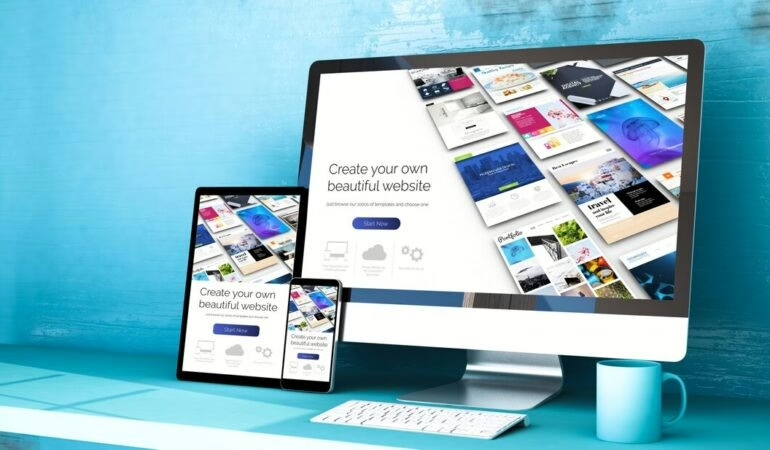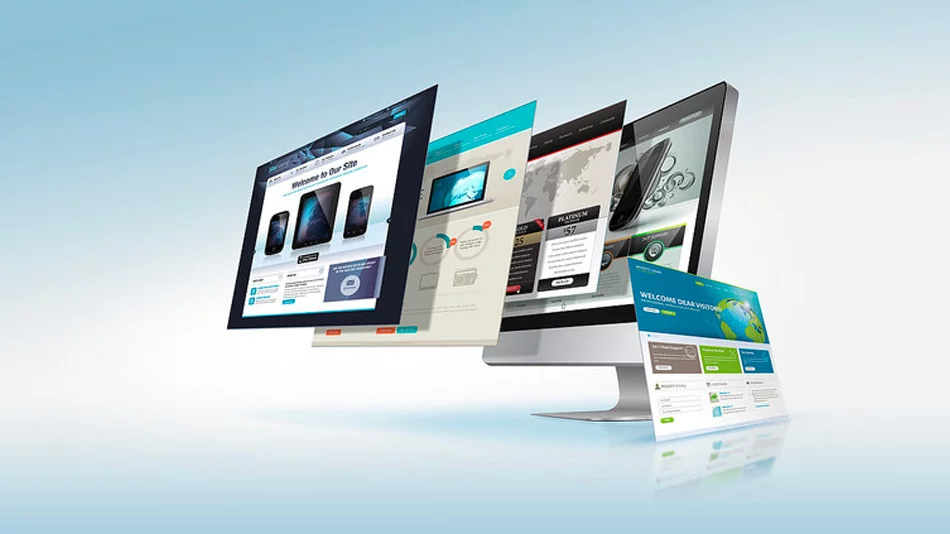In the current competitive online market, landing page optimization is essential for converting visitors into customers. From boosting engagement to increasing sales, a well-optimized landing page can make all the difference. This guide provides insights into what landing page optimization entails, its benefits for businesses, and actionable tips to improve your conversion rates. Whether you’re looking to build a high-converting page from scratch or refine an existing one, these tips and tools will equip you to create an effective landing page.
Table of Contents
What is Landing Page Optimization?
Landing page optimization is the process of enhancing various elements on a landing page to increase the rate at which visitors take a desired action, whether it’s signing up, purchasing a product, or completing a form. Unlike regular web pages, landing pages are designed for specific campaigns and actions, and they’re typically focused on a single goal. The optimization process involves testing and adjusting components like headlines, visuals, calls-to-action, and forms to make the page more appealing and effective.
Landing pages serve as a bridge between your marketing campaign and your sales goals. Therefore, optimizing them can maximize your return on investment (ROI), improve engagement, and ultimately boost sales.
Benefits of Landing Page Optimization for Businesses in Singapore
Landing page optimization brings a variety of advantages to businesses, particularly for those operating in competitive markets like Singapore.
- Increased Conversion Rates: An optimized landing page can increase conversions by ensuring visitors find relevant information quickly and easily. An optimized landing page can increase conversions by ensuring visitors find relevant information quickly and easily. Businesses that create well-optimized landing pages can experience up to a 220% boost in conversion rates compared to generic web pages.
- Enhanced Brand Image: A well-designed landing page reflects professionalism and can strengthen your brand identity. For instance, a web designing company in Singapore might use optimized landing pages to showcase its portfolio and attract more clients.
- Lower Cost-Per-Click (CPC): Optimized landing pages often lead to a higher quality score in Google Ads, which reduces the CPC and brings in more cost-effective traffic.
- Improved Ad Performance: An optimized page helps you maximize the performance of landing page optimization in Google Ads campaigns, making each click more valuable.
In essence, landing page optimization not only helps to drive conversions but also enhances customer experience, reduces bounce rates, and improves the ROI for paid advertising campaigns.

Best Practices for Landing Pages to Improve Conversion Rates
To ensure your landing page is primed for conversion, follow these best practices:
- Clear and Compelling Headline: The headline should communicate the main benefit of your offering immediately.
- Strong Visual Hierarchy: Use contrasting colors, fonts, and whitespace to draw attention to key elements like your call-to-action (CTA).
- Concise and Persuasive Copy: Focus on benefits rather than features, and make your copy as concise as possible to keep users engaged.
- One Primary CTA: To avoid confusing visitors, use a single, clear CTA, such as “Sign Up” or “Get Started.”
- Social Proof: Include testimonials, case studies, or trust badges to build credibility and reassure potential customers.
- Fast Loading Times: Landing page speed optimization is crucial. Slow-loading pages are a common reason for high bounce rates. Optimizing images, reducing script files, and minimizing redirects can improve load time.
- Mobile-Friendly Design: With mobile traffic on the rise, your landing page must be responsive across all devices.
Incorporating these best practices makes the landing page more efficient at turning visitors into leads, regardless of the platform or device they are using.
Key Considerations Before Building a Landing Page
Before you dive into creating your landing page, consider the following factors:
- Define the Objective: Each landing page should have a single, focused goal. For example, the objective could be to generate leads, increase product sales, or drive event sign-ups.
- Know Your Audience: Understanding the pain points, preferences, and behaviors of your audience allows you to create a more relevant and engaging page.
- Map Out the Customer Journey: Ensure your landing page aligns with the stage your audience is in. For instance, if they’re in the awareness stage, offer valuable content rather than pushing for an immediate purchase.
- Plan the Content and Visuals: Carefully plan the visuals and copy for your page, as these elements play a critical role in user engagement and conversion rates.
Taking these steps can save time and resources by ensuring that your landing page is optimized for the right audience and goals from the beginning.
Top Landing Page Optimization Tips to Increase Conversion Rates
To further enhance your landing page’s effectiveness, here are additional landing page optimization tips that focus on boosting conversions:
- A/B Testing: Testing multiple variations of your page is essential for determining which elements resonate most with users. Landing page A/B testing allows you to compare different headlines, images, CTAs, and layouts to see which version performs best.
- Optimize for SEO: While landing pages are primarily conversion-focused, basic SEO practices (like optimized metadata and headings) can increase visibility, especially for local searches.
- Use Urgency and Scarcity: Adding elements of urgency, such as limited-time offers, can motivate users to act faster. However, it’s essential to be genuine to avoid user distrust.
- Engaging Visuals and Media: Use high-quality images, videos, and graphics relevant to your offering. Avoid excessive use of visuals, as it can distract from the page’s main goal.
- Consistent Brand Messaging: Ensure the messaging on your landing page aligns with the ad copy or content that brought users there. Consistent messaging improves user trust and makes for a seamless experience.
These strategies work well for both B2B and B2C landing pages, ensuring that each page element contributes to an improved user experience and higher conversion rate.

Which Landing Page Optimization Tools to Use
To streamline and enhance your optimization efforts, consider utilizing the following landing page optimization tools:
1. Google Optimize
Google Optimize is a powerful, free tool from Google designed for running A/B tests, multivariate tests, and redirect tests. It seamlessly integrates with Google Analytics, allowing you to test different page variations and get actionable insights about what performs best.
-
Key Features:
- A/B testing: Create different versions of your landing page and see which performs better.
- Multivariate testing: Experiment with multiple elements on the page simultaneously, ideal for optimizing layouts or calls-to-action.
- Visual editor: Offers a straightforward interface to make adjustments without coding.
- Targeting capabilities: Customize the experience for specific audience segments based on factors like location, behavior, or device type.
- Best For: Businesses of all sizes, especially those already using Google Analytics, looking for a data-backed way to test and improve their landing pages.
2. Unbounce
Unbounce is a comprehensive landing page builder designed specifically for marketers. With a variety of templates and a drag-and-drop builder, it’s an ideal solution for creating high-quality, conversion-focused landing pages quickly.
-
Key Features:
- Drag-and-drop builder: Easily create and customize landing pages without needing technical skills.
- Templates: Choose from a variety of high-converting templates designed for different industries and purposes.
- A/B testing: Built-in A/B testing lets you experiment with different page elements and improve conversion rates.
- Dynamic Text Replacement: Tailor your landing page headlines to match specific keywords, ideal for paid search campaigns.
- Best For: Marketers looking for a user-friendly platform to create and test landing pages without developer help.
3. Crazy Egg
Crazy Egg is a powerful tool for understanding user behavior on your landing page through heatmaps, scroll maps, and user session recordings. These insights help you identify which areas of your page attract the most attention and which parts may need adjustments to improve engagement.
-
Key Features:
- Heatmaps: Visualize where users are clicking, allowing you to see the most popular sections of your page.
- Scroll maps: Understand how far visitors scroll down the page, which helps in placing key information where it’s most likely to be seen.
- User session recordings: Watch how visitors interact with your page in real time to spot usability issues or conversion barriers.
- A/B testing: Run tests within Crazy Egg to see how changes to elements affect user engagement.
- Best For: Those wanting deep, visual insights into user behavior on their landing page to identify areas for improvement.
4. HubSpot
HubSpot is an all-in-one marketing platform that includes tools for creating, optimizing, and tracking landing pages. Known for its seamless integration with CRM and marketing automation tools, HubSpot allows businesses to manage their entire marketing funnel from one platform.
-
Key Features:
- Landing page builder: Create and customize landing pages using a drag-and-drop editor.
- Analytics and reporting: Track landing page performance, including conversion rates and source data.
- Personalization: Show different content to users based on factors like their lifecycle stage or list membership, creating a more personalized experience.
- A/B testing and optimization: Run A/B tests and easily measure the results to optimize your landing page strategy.
- Best For: Marketers looking for a complete inbound marketing solution with landing page creation and optimization capabilities as part of a broader marketing suite.
5. PageSpeed Insights
Google’s PageSpeed Insights is a free tool focused on landing page speed optimization. Page speed is a crucial factor in conversion rates, as slow-loading pages often lead to high bounce rates. PageSpeed Insights analyzes your page’s loading performance and provides actionable recommendations for improvement.
-
Key Features:
- Speed analysis: Measures page speed for both mobile and desktop users, providing scores and insights on loading times.
- Improvement suggestions: Offers specific recommendations like image compression, script optimization, and caching to improve load time.
- User experience metrics: Displays Core Web Vitals, including Largest Contentful Paint (LCP) and First Input Delay (FID), which are key indicators of page performance.
- Best For: Any business looking to improve page load times and enhance the user experience, especially on mobile devices.
Frequently Asked Questions
What is the purpose of a landing page?
A landing page is designed to encourage visitors to take a specific action, like signing up for a newsletter, purchasing a product, or filling out a form.
How can I measure the success of my landing page?
Metrics such as conversion rate, bounce rate, and time on page are critical for assessing the success of your landing page.
What’s the best way to test my landing page?
A/B testing is the most effective way to test various elements on your landing page and understand what resonates best with your audience.
How often should I optimize my landing page?
Regular optimization is recommended, especially if you notice a drop in conversions or a rise in bounce rates. Monthly or quarterly reviews can help keep your page performing at its best.
Can I optimize landing pages for both desktop and mobile?
Yes, ensuring that your landing page is responsive and functions well on both desktop and mobile is essential for conversion rate optimization.
Conclusion
Effective landing page optimization is the key to converting website visitors into paying customers. By focusing on best practices, A/B testing, speed optimization, and using the right tools, you can transform your landing pages into powerful conversion engines.
To make the process even easier, Vinova offers professional web design and optimization services, helping you achieve exceptional results and a higher ROI for your campaigns. Get in touch with Vinova today to enhance your landing pages and see a tangible impact on your business growth.